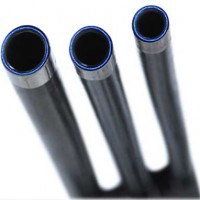Today’s electronic devices for the heart are like “having an emergency room in your chest,” says Post cardiology consultant Dr. Douglas P. Zipes, coinventor of the implantable cardioverter defibrillator (ICD).
Pacemakers ramp up heart rates that drop too low. ICDs detect deadly heart rhythms and shock quivering hearts back into action. Both deliver electricity via thin wires called leads that connect to the inside of the heart and are gradually surrounded by scar tissue.
Over time, however, cardiac leads may wear out or interfere with blood flow. In some cases, an older wire may be in the way of a new one that is needed.

How to detect—and address—potential problems with cardiac leads is an active focus of discussion and research. The Heart Rhythm Society (HRS) recently issued the industry’s first comprehensive guidelines for cardiac lead removal at their annual meeting in Boston.
“Removing leads that have been in place for some time can be a difficult procedure, requiring specialized skills and equipment,” Dr. Zipes explains to the Post. “A Heart Rhythm Society Task Force has just published (in the June issue of HeartRhythm) information about lead performance and follow-up while the new HRS guidelines on cardiac lead removal help the clinician decide who should have a lead removed and how it is best done.”
New study details presented at the HRS annual meeting suggest that the Spectranetics Excimer Laser System may allow heart physicians to break down scar tissue and extract problematic leads in a controlled fashion.

The four-year LExICon (Lead Extraction in Contemporary Settings) study demonstrated a clinical success rate of 97.7 percent utilizing the Spectranetics Laser Sheath (SLS II®). The system emits pulses of low temperature ultraviolet light from a circle of fibers to break down tissue that binds the lead to the vein or heart, permitting removal.
“As increasing numbers of patients receive implanted cardiac devices, understanding lead management options is critical,” said Dr. Bruce Wilkoff, principal investigator of the study and Director of Cardiac Pacing and Tachyarrhythmia Devices at Cleveland Clinic. “Patients are living longer, but leads don’t last forever.”
Become a Saturday Evening Post member and enjoy unlimited access. Subscribe now


